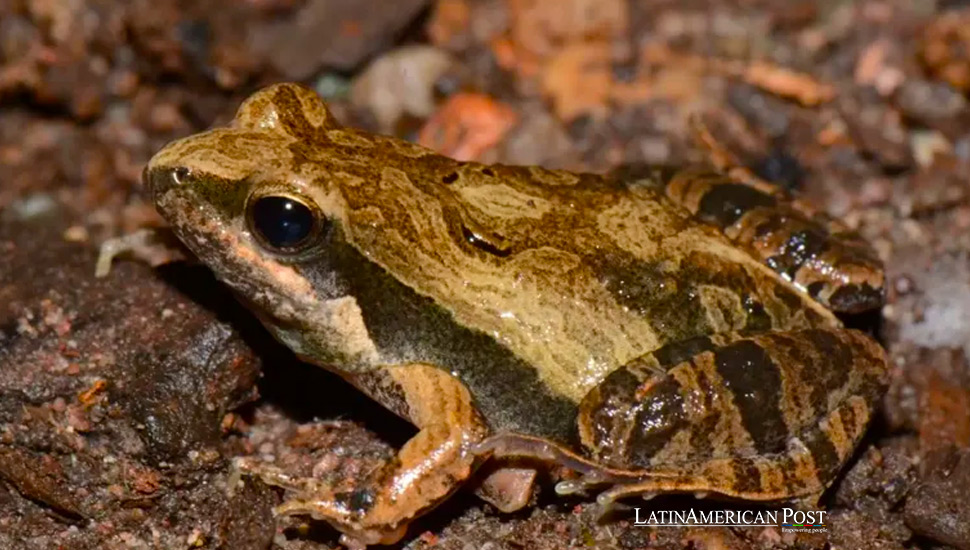New Frog Species Named After Argentinean Ex-President Cristina Fernández

A new frog species discovered by Argentine, Brazilian, and Uruguayan researchers has been named ‘Fisaremus Cristine’ in honor of former Argentine President Cristina Fernández, recognizing her contributions to education, science, and technology.
Naming a New Frog Species
In a groundbreaking discovery, researchers from Argentina, Brazil, and Uruguay have named a newly discovered species of frog’ Fisaremus Cristine,’ in tribute to Cristina Fernández, the former President of Argentina (2007-2015). This homage is a testament to Fernández’s significant contributions to education, science, and technology during her tenure.
The naming of this new species highlights the interconnected nature of Latin American countries in scientific research and underscores the importance of political support for scientific endeavors. The discovery was made possible by collaborating with scientists from these three nations, signifying the solid scientific ties that bind the Latin American region.
Professor Diego Baldo, one of the lead researchers from the National Council for Scientific and Technical Research (Conicet) in Argentina, played a pivotal role in this discovery. The frog belongs to a group known as “crying frogs,” named for their loud, night-time calls reminiscent of a wailing baby. This characteristic led to the species colloquially called “crybabies” in their natural habitat.
Fernández’s Legacy in Scientific Advancement
The research team decided to name the frog after Fernández based on her administration’s emphasis on enhancing the scientific landscape in Argentina. Under her leadership, significant investments were made in scientific research and technology, fostering an environment where discoveries like ‘Fisaremus Cristine’ could flourish.
Identifying this new species involved sophisticated computer analyses of amphibian calls and extensive phylogenetic studies. This collaborative effort not only led to the discovery of the unnamed species but also demonstrated international scientific cooperation’s capacity to advance knowledge and discovery.
The response from the international scientific community was overwhelmingly positive, with colleagues from Brazil particularly appreciative, given their recent challenges under the administration of Jair Bolsonaro, who had notably reduced funding for science and technology. This sentiment was echoed across the region, contrasting the support for science in Fernández’s Argentina with the neglect seen in other administrations.
However, the climate for scientific research in Argentina has faced challenges recently, especially following the presidency of Javier Milei. The libertarian government’s cuts and dismissals in scientific sectors sparked widespread protests among Conicet workers and other research and educational bodies. This action led to international condemnation, including a public letter from 68 Nobel laureates criticizing the government’s disregard for scientific investment.
The debate surrounding the allocation of funds to scientific research has been intense. Presidential spokesperson Manuel Adorni defended the government’s stance, arguing for focusing on fields like economy and artificial intelligence in medicine while dismissing other research areas as less valuable.
This discovery and the subsequent naming of the frog species spotlighted the complex interplay between politics and science in Latin America. It underscores the varying levels of support for scientific research across the region and highlights the potential impact of political leadership on scientific advancement.
A Symbol of Collaboration and Political Influence
In the broader context, the story of ‘Fisaremus Cristine’ is more than just naming a new species. It serves as a reminder of the critical role political figures can play in shaping the scientific landscape. The collaborative effort of researchers from different Latin American countries illustrates the potential for regional cooperation in advancing scientific knowledge and discovery.
This scientific tribute reflects Cristina Fernández’s legacy and continues to spark discussions on the importance of political support for science. It also raises questions about the future direction of scientific research in Latin America amidst changing political landscapes and varying levels of governmental backing.
Also read: Argentina’s Contests History Revisiting Dictatorship Narratives
As ‘Fisaremus Cristine’ begins its journey in the annals of scientific discovery, it stands as a symbol of the interconnectivity of science and politics. It highlights the impact of political decisions on scientific progress and the enduring bonds of collaboration that stretch across borders in Latin America. This naming not only honors a political figure but also signifies the intricate relationship between governance and the advancement of scientific knowledge in the region.





